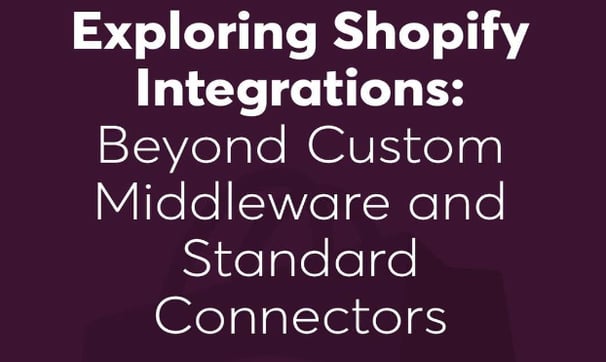Exploring Shopify Integrations: Beyond Custom Middleware and Standard Connectors
WHITE PAPERS


When it comes to integrating with Shopify, there are several options available, each with its own set of advantages and potential drawbacks. To make an informed decision, it's essential to understand the implications of each choice in terms of time, cost, technical expertise, maintenance, flexibility, and adaptiveness.
For instance, you can choose to integrate with Shopify via a third-party app or use Shopify's native integration tools. Third-party apps can offer more features and customization options, but they often come with a higher price tag and may require technical expertise to set up and maintain. On the other hand, Shopify's native tools may be easier to use and more cost-effective, but they may not offer as many advanced features.
When it comes to maintenance, third-party apps may require regular updates, while Shopify's native tools are typically updated automatically. Additionally, some integrations may be more flexible and adaptable than others, allowing you to customize and tweak them as your needs change over time.
Overall, understanding the implications of each integration option is critical to making an informed decision that works for your business. By taking the time to explore your options and weigh the trade-offs, you can find the integration solution that best meets your needs and helps you achieve your goals.
